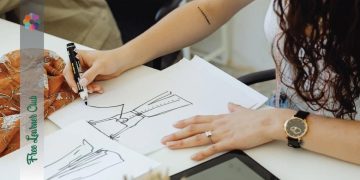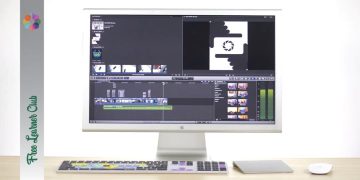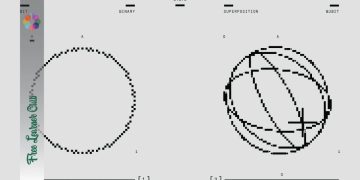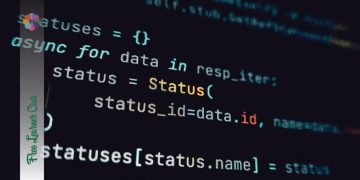When we ask ourselves this question, it is easy for a very easy and obvious answer to come to mind: Study. But sometimes this solution does not seem obvious if you do not know, for example, how to start studying or what specific steps to follow to do it efficiently.
That is why one of the keys to success is to be able to correctly apply a good study method. If you do this regularly, the improvement in results becomes very evident.
In this article, we summarize the 5 steps that make up the method that we teach in our academy and that is giving such good results.
Of course, we have to keep in mind that it is useless to have many tools if we have no interest in using them properly. Any improvement has to be preceded by your firm’s will to want to improve. If this is not the case, you must first find a way to improve your interest and motivation.
“Not even the best tool works in the hands of someone who has no interest in using it”
Step 1st: The Glance
A mental outline of the entire syllabus
The first step to start studying is to be clear about everything that is included in the exam and make sure that I have all the necessary material and notes. Once I have all the material ready and organized, I can start “The Glance”.
A “skim” consists, as its name suggests, of taking a quick look at the entire syllabus. We can first look at the index of the book, where the topics and their sections are specified. Then we will go through the pages, carefully reading the titles, subtitles, summary tables, and graphs.
Mind you, the objective now is to read them calmly, not to study them or try to memorize them. We will not waste much time reading the entire text either, it is not necessary, and we will only focus on the most relevant.
This practice will be very useful to understand everything that is included in the exam and to create a mental image of the entire syllabus as a whole.
We can imagine that our brain works like a cupboard full of drawers. To add new information to a certain drawer we will first have to open it. Seeing what the exam is about as a whole and reading some concepts will help us to “open” all those necessary mental drawers where we will add this new information that we are going to study.
In addition, it will also help us to realize the full extent of what we have to study so that we will be better prepared to organize our study planning.
“We skim through the titles, subtitles, summary tables, and graphs to open the mental drawers where we will add the new information”
Key points of the overview:
- I understand everything that is included in the exam.
- I skim through all the titles and images
- I assimilate the topics covered in the syllabus
Step 2nd: The Underline
We stick with the main ideas
One of the main mistakes that we students make when we start “studying” is that we basically understand that studying is based on reading the same text many times until we can repeat it mentally or, in the best of cases, verbally, without having to read it.
This method may work to pass an exam that we have in a few days if we have a good memory. But it is by no means the best study method and, without a doubt, it is of no use to us if what we want is to learn.
To learn something we need to give ourselves space to reflect on it and, above all, understand it. That is why the best way to study is always to “work” on the syllabus. This is what we call “ Creating your own personal syllabus ”.
This personal agenda is always composed of a schematic summary and complemented with an outline of the basic points. In order to create these elements, we must first make sure that we have fully understood each of the topics to be studied.
The process of underlining the main ideas, the secondary ideas, and the key data (dates, figures, or names) will help us to break down the information. * Ideally, each of the elements mentioned should be underlined with a different color.
We can then take advantage of the fact that we have selected the most relevant information to structure it in our own way in the following steps of the method.
“Underlining helps me identify the main ideas and forces me to understand the information correctly”
Key points of underlining:
- I read the whole syllabus calmly
- I make sure I understand everything
- I underline the main ideas, the secondary ones, and the data
Step 3rd: The Summary and the Outline
Our own personal agenda
If we could only choose one of the 5 steps, this would be the one chosen due to its special importance in helping our brain to interpret and retain information. In reality, there are several very important benefits of integrating the creation of a summary and an outline into our study method.
First, to transfer information from a textbook or notes to our “own syllabus” we must process it (understand it, synthesize it, structure it, and write it down). This whole process will be tremendously beneficial to be able to memorize it later.
Secondly, we will have the opportunity to make the future memorization process easier for ourselves for several reasons: We will be able to reduce the original text to 30%, we will be able to modify it to adapt it to our own language and expressions, we will be able to structure it as best suits us and we will be able to create a more attractive and memorable text on a visual level.
THE SUMMARY
We have to take into account that the order of the factors in this case does alter the product. Once the underlining has been done, the first thing we should do is the summary. We always choose to teach students to make a schematic summary (a fairly graphic summary, with the elements linked and small diagrams within the summary).
In this summary, we have all the key sections well structured with the main ideas, the secondary ones, and the data.
THE OUTLINE
Then, from this schematic summary, we will create the basic outline. In this basic outline, we will only put the title of the topic and we will divide it into the key concepts to be covered for each topic. Be careful! In the outline, we only have to put the titles of the key sections, not the rest of the information. At most, we can add the two or three most important concepts of each section to know what it is about.
The main objective of the outline is to help us memorize and integrate a mental outline of the basic elements to be covered by each topic.
Key points from the summary and outline:
- I read the syllabus again
- I make a summary and an outline in my own words
- I mark the titles, concepts, and important data
Step 4th: Memorization
Assimilating and memorizing concepts in the long term
If in the previous step, we first made the summary and then the outline, in this case, we will use them in the reverse order. First, we will memorize the outline and then the summary. This is because to memorize it is always better to start with the most general information and end with the most detailed.
Also, thanks to the outline we will first memorize the basic structure of each topic, that is, the sections or key concepts to be covered by each topic.
Once we have learned the outline, we can move on to study the information in the summary. It is important that we study from the summary, not from the book. If we have made good summaries and outlines, we will not need to go back to the book for anything other than to check that we have not left out anything important.
The good thing about studying our syllabus, in addition to the benefits we have already mentioned above, is that we will have been using several types of memorization when preparing them (visual memory and written memory).
If later, when memorizing them, we dedicate ourselves to reciting the information out loud, we will also be using our verbal memory and our auditory memory. All of this will help our brain to retain the information.
Ideally, we should start studying well in advance so that we can learn one or two topics a day. Each time we study, we will learn about 2 topics and review the ones we have already learned in the previous days.
When we study, we should visualize everything we are trying to memorize. In the case of words or concepts to remember, we should establish visual relationships or relationships with other concepts that help us remember.
“Using different types of sensory memory will help our brain retain information”
Key points of memorization:
- I study the diagrams and summaries I have made
- I try to visualize the different concepts in images
- I imagine stories and relationships to be able to remember and the data
Step 5th: The Check
We make sure to arrive prepared for the exam
We don’t want to realize that we haven’t studied enough when it’s too late and we find ourselves in front of the exam without being able to answer the questions.
To avoid this from happening to us, we will do a mock exam well in advance. This way we will know, with enough time, whether we are prepared or not. And, if we are not, at least we will be aware that we need to study more and we will have the opportunity to do so.
First, we can check if we know the lesson ourselves, trying to remember the different elements without looking at the notes (mental check).
Then it will be interesting to recite the lesson out loud (oral check). It will always be more difficult to say it than to just think it. In addition, having to tell it to another person (parents, classmates, etc.) will put us under even more pressure and we will realize whether we know it well or not.
Finally, it would be ideal for someone or ourselves to give ourselves a written test with some questions like those that could appear in the real exam (written check). This will force us to see if we are able to structure the information well and it is the most difficult but at the same time most real test to find out if we are prepared.
“We don’t want to realize that we haven’t studied enough when it’s already too late”
Key points of the check:
- I check if I remember everything without looking at the outline or the summary
- I’m looking for someone who can ask me the lesson
- I do a written test with 5 – 10 questions



















